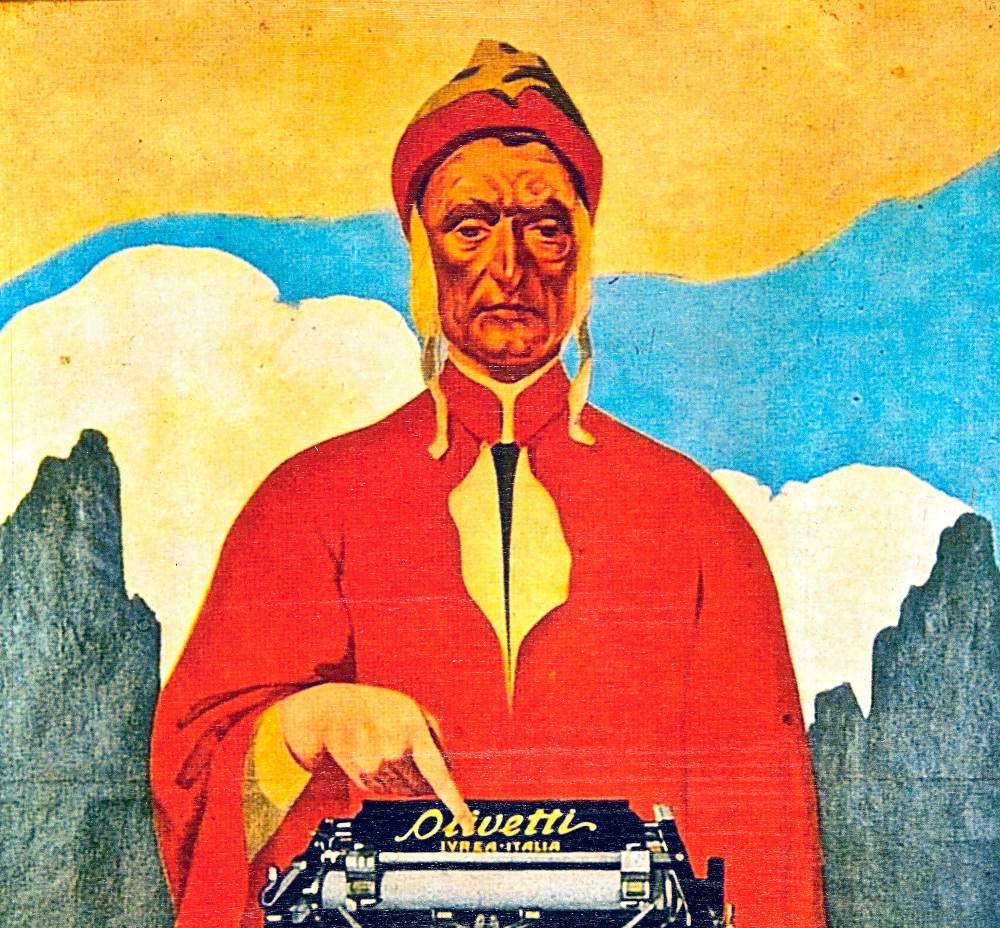From September 25, 2021 to January 9, 2022, the MAR in Ravenna will host the exhibition Un Epopea POP, curated by Giuseppe Antonelli: the exhibition aims to narrate the popular epic of Dante and his poem, concluding the exhibition cycle Dante. The Eyes and the Mind, promoted by the Municipality of Ravenna - Department of Culture, organized by the MAR - Art Museum of the City of Ravenna and realized with the valuable support and patronage of the Emilia-Romagna Region, Dante 2021, the National Committee for the Celebration of 700 years - Ministry of Culture, with the contribution of the Fondazione del Monte di Bologna e Ravenna and the Ravenna Chamber of Commerce, and under the patronage of the Italian Dante Society.
A contemporary art itinerary curated by Giorgia Salerno intersects with the exhibition.
Dante’s popular fortune begins as early as the 14th century and reaches all the way to the cultural universe we call “pop.” Some of his most famous verses have become almost proverbial, while others we encounter in songs, advertisements and even writings on walls. The poet’s profile, recognizable all over the world, has also become a familiar icon, which we find reproduced in monuments, stamps, and posters. Contributing to this fortune have been artists who have retold the Divine Comedy in different mediums.
The Comedy, translated into a hundred languages, has spread through thousands of popular illustrated editions, commentaries and summaries, film reductions and television parodies, sticker albums, board games, comic strip stories and cartoons.
There is the Dante symbol of Italian and European cultural identity, whose image goes from lira to euros. There is the image of Dante used as a commercial brand and in an advertising key such as the famous Olivetti affiche, chosen as the image of the exhibition. There is the Dante character that returns in the plots of books, films, games and video games, up to the mnemonic fortune of the verses of the Comedy, retraced through some key episodes ranging from the 14th century to the present.
The exhibition is divided into several sections: Dante in memory, Dante in images, Dante in cinema, Dante in parody, Dante in play, Dante for sale, Dante character, Dante icon, Dante at school, and Dante and Beatrice with more than a hundred works and objects. Numerous audio and video contributions, including interactive ones. An exhibition with a multimedia character, largely accompanied by the voices of the great performers who tried their hand at the lectura Dantis.
Interwoven with the entire exhibition project is an itinerary of contemporary art curated by Giorgia Salerno. A voiceover that sees the dialogue between the works of international artists chosen to ideally reinterpret some of Dante’s themes that will serve as a guide for the public. For each chosen theme, one or more artists have been identified and, to open the itinerary, with the theme of souls, there is in the 16th-century cloister of the MAR a large piece of architecture by Edoardo Tresoldi that ideally reinterprets the Noble Castle or Castle of the Magni Spirits, an emblematic place that Dante mentions in the fourth canto of the Inferno. Recounting the Journey, however, are the works of one of the leading exponents of Land Art, Richard Long. Within the section dedicated to Female Figures, it is Letizia Battaglia, Tomaso Binga, Irma Blank, Rä di Martino, Maria Adele Del Vecchio, Giosetta Fioroni, Elisa Montessori, Antonia Pozzi and Kiki Smith who reinterpret Dante’s women through their works. The exhibition continues with the theme of Dream, and representing it are Robert Rauschenberg, among the leading exponents of American pop art, with the 34 plates of Dante’s Inferno, and Adelaide Cioni who created a site-specific immersive work designed for the section. The exhibition concludes with a work from the MAR collections, Stella-acidi by Gilberto Zorio, as a reference to the theme of Light and the stars, so dear to Dante and to which he leaves the task of concluding each cantica and the entire Comedy.
The exhibition is realized with the valuable collaboration of the Classense Library and numerous institutional and private lenders such as the Biblioteca Nazionale Centrale (Florence), the Biblioteca Nazionale Marciana (Venice), the Biblioteca Apostolica Vaticana, the Fondazione Biblioteca Benedetto Croce (Naples), the Museo del Precinema (Padua), the Civica Raccolta delle Stampe A. Bertarelli (Milan), contemporary art galleries Monica De Cardenas (Milan), Tiziana Di Caro (Naples), Lorcan O’Neill (Rome), P420 (Bologna) and all the artists involved.
For info: www.mar.ra.it
Hours: Tuesday to Saturday from 9 a.m. to 6 p.m.; Sundays and holidays from 10 a.m. to 7 p.m. Closed Mondays.
Image: Teodoro Wolf Ferrari, Affiche Olivetti M1 (1912; poster on paper, 32.6 x 21.8 cm)
 |
| At the Ravenna Mar, the popular epic of Dante and his Comedy, from publicity to parody |
Warning: the translation into English of the original Italian article was created using automatic tools. We undertake to review all articles, but we do not guarantee the total absence of inaccuracies in the translation due to the program. You can find the original by clicking on the ITA button. If you find any mistake,please contact us.